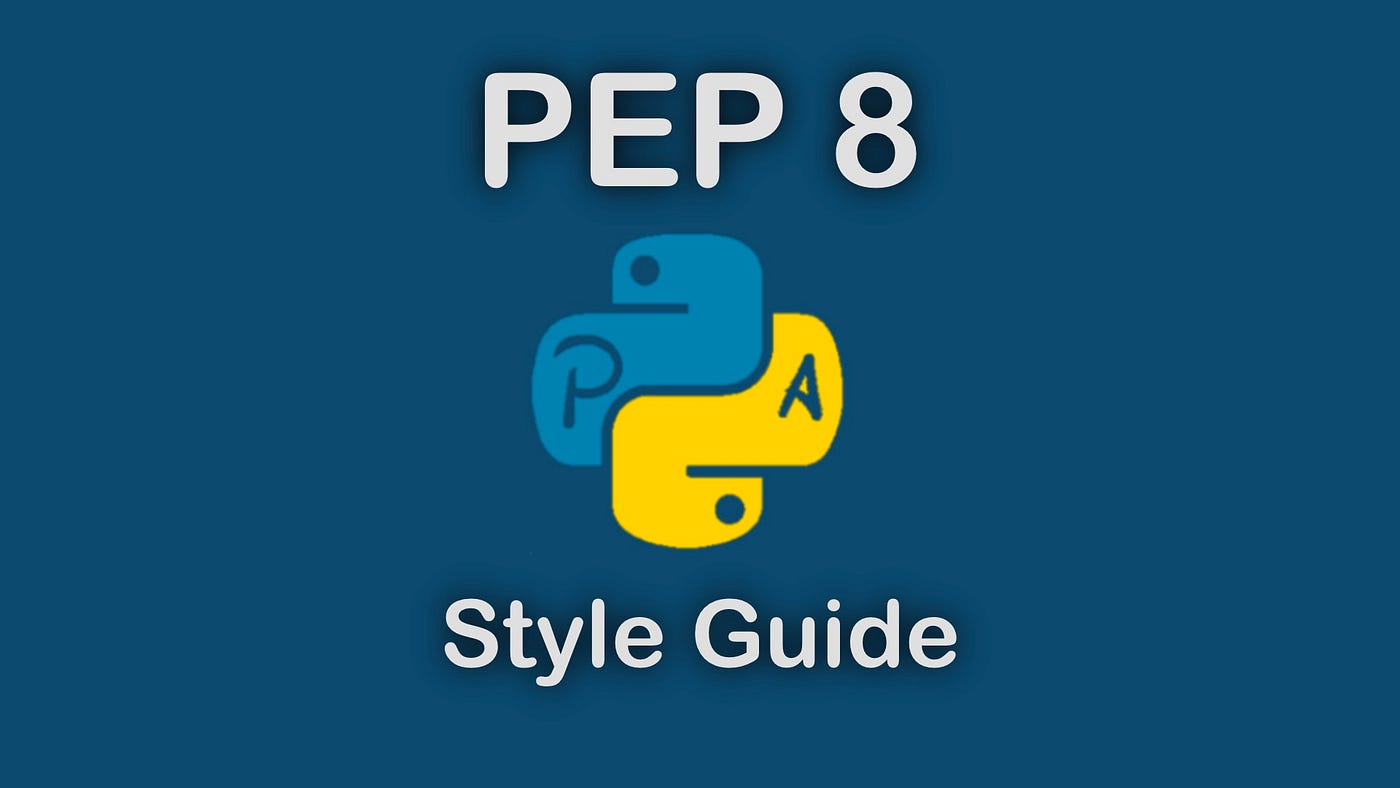PEP 8 is Python's style guide—the definitive resource for Python coding conventions that helps developers write consistent, maintainable, and readable code. This comprehensive guide breaks down the guide's key principles and shows you how to apply them in your Python projects.
What is PEP 8?
PEP 8, or Python Enhancement Proposal 8, is the official style guide for Python code. Created by Guido van Rossum (Python's creator), Barry Warsaw, and Nick Coghlan, it provides coding conventions that help make Python code more readable and consistent across the Python ecosystem.
Why PEP 8 Matters for Python Developers
- Readability: Code is read much more often than it's written. Clean, consistent code saves time and reduces cognitive load.
- Collaboration: When everyone follows the same guidelines, teamwork becomes smoother and more efficient.
- Maintainability: Well-formatted code is easier to debug, refactor, and extend.
- Professionalism: Following established conventions demonstrates your expertise and attention to detail.
Essential Guidelines
Indentation and Line Structure
The guidelines recommends 4 spaces per indentation level—not tabs. This consistency helps avoid the "tab vs. spaces" debate and ensures code appears the same across different editors.
For line length, we suggest limiting lines to 79 characters. While this might seem restrictive in the era of widescreen monitors, it helps when:
- Viewing multiple files side-by-side
- Using code review tools
- Printing code
- Working in terminals with limited width
Naming Conventions
The guide defines clear naming patterns:
- Functions and variables: Use lowercase with underscores (
calculate_total,user_name) - Classes: Use CapWords/CamelCase (
UserProfile,DatabaseConnection) - Constants: Use uppercase with underscores (
MAX_ITERATIONS,API_KEY) - Modules: Use short, lowercase names (
utils,models) - Packages: Use short, lowercase names without underscores (
requests,numpy)
Imports
Follow these import best practices:
- Place imports at the top of the file
- Group imports in this order:
- Standard library imports
- Related third-party imports
- Local application imports
- Use separate lines for each import
- Avoid wildcard imports(
import os
import sys
from datetime import datetime
import numpy as np
import pandas as pd
from myproject.utils import helper
from myproject.models import UserWhitespace
Whitespace usage significantly impacts readability:
- Surround operators with a single space:
x = 1 + 2(notx=1+2) - Don't use spaces around list indices, function calls, or keyword argument assignments:
-
my_list[0](notmy_list[ 0 ]) -
function(arg)(notfunction( arg )) -
function(key=value)(notfunction(key = value))
-
- Use blank lines to separate logical sections of code
Comments
Write meaningful comments that explain "why" rather than "what":
- Use complete sentences beginning with a capital letter
- Update comments when code changes
- Use inline comments sparingly
- Consider using docstrings for modules, classes, and functions
String Quotes
PEP 8 allows single or double quotes for strings, but be consistent. If a string contains quotes, use the other type to avoid escaping:
name = "John's laptop" # Cleaner than 'John\'s laptop'
query = 'SELECT * FROM "users"' # Cleaner than "SELECT * FROM \"users\""Tools for PEP 8 Compliance
Several tools can help enforce PEP 8 standards in your codebase:
Linters
- Pylint: A comprehensive linter that checks for PEP 8 compliance and other code quality issues
- Flake8: Combines PyFlakes, pycodestyle (formerly pep8), and Ned Batchelder's McCabe script
- pycodestyle: A tool to check your Python code against PEP 8
Code Formatters
- Black: An uncompromising code formatter that automatically reformats code to consistent standards
- YAPF: Google's Python formatter with configurable formatting styles
- autopep8: Automatically formats Python code to conform to PEP 8
IDE Integration
Most modern Python IDEs and editors support PEP 8 compliance through built-in features or extensions:
- PyCharm: Built-in PEP 8 checking and automatic fixing
- Visual Studio Code: Available through extensions like "Python" by Microsoft
- Sublime Text: Via packages like "SublimeLinter-pycodestyle"
Common PEP 8 Violations and How to Fix Them
1. Line Length Violations
Problem: Lines exceeding 79 characters Solution: Break long lines using parentheses or backslashes
# Bad
result = some_function_with_a_very_long_name(parameter1, parameter2, parameter3, parameter4, parameter5)
# Good
result = some_function_with_a_very_long_name(
parameter1, parameter2, parameter3,
parameter4, parameter5
)2. Improper Indentation
Problem: Inconsistent indentation levels Solution: Use exactly 4 spaces per indentation level
3. Missing Whitespace Around Operators
Problem: x=1+2*3 Solution: x = 1 + 2 * 3
4. Mixing Tabs and Spaces
Problem: Using both tabs and spaces for indentation Solution: Configure your editor to use 4 spaces for indentation
When to Bend the Rules
PEP 8 itself acknowledges that consistency with the surrounding code is sometimes more important than following the style guide strictly. As the document states:
A style guide is about consistency. Consistency with this style guide is important. Consistency within a project is more important. Consistency within one module or function is the most important.
In practice, this means:
- Follow your project's established conventions if they differ from the guide
- Maintain backward compatibility when working with legacy code
- Break rules when it genuinely improves readability
PEP 8 isn't just a set of arbitrary rules—it's a collection of best practices distilled from years of Python development experience. By following these guidelines, you'll write more readable, maintainable code and collaborate more effectively with the wider Python community.
More from Python Central
https://www.pythoncentral.io/series/python-classes-tutorial/

